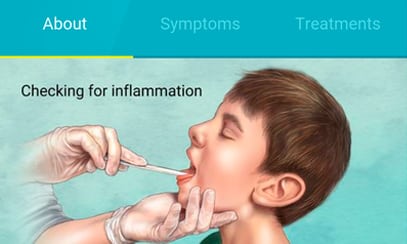
If communicators want to extend their reach—and spike their brand’s Google rankings—they’re going to have to add more visuals to their messaging.
Starting Tuesday, Google search results for 400 of the most common medical conditions—ranging from the common cold to pinkeye—will be accompanied by elaborate illustrations as well as an assessment of how common the medical condition may be.
Rabies, for example, features a drawing of a raccoon next to an arm with a bite, followed by comments such as "very rare" and "medically treatable by a doctor or professional." Much of the medical information has been reviewed by the Mayo Clinic.
Google’s move plays into how consumers view news and information these days, whipping out their mobile devices, doing quick searches and glancing at the results. "A picture is worth a thousand words, especially when you’re on mobile," Amit Singhal, Google VP in charge of search, told USA Today during a discussion of Google's latest foray into visual storytelling.
People process visual information much faster than written communication. Our guess is Google will soon apply illustrations to other verticals that lend themselves to visual storytelling, whether its financial, travel, manufacturing or entertainment.
By melding pictures with their messaging, PR pros can separate their organizations from competitors. Whatever the sector, it’s increasingly incumbent upon PR managers and marketers to include rich visual elements in their messaging and SEO efforts.
Visuals get the message out a lot quicker, and consumers are more likely to share images than text. The shelf life for a static message—with just a link or two embedded in the copy—is fast reaching its expiration date.
Follow Matthew Schwartz on Twitter: @mpsjourno1
